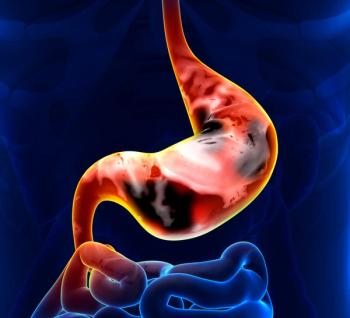
Novel Agent S-1 Has Similar Efficacy to 5-FU in Certain Gastric Cancers
Results of a phase III trial suggest that the combination of the contemporary oral fluoropyrimidine S-1 and cisplatin offers similar efficacy to 5-flourouracil and cisplatin in patients with chemotherapy-naive diffuse type adenocarcinoma of the gastroesophageal junction or stomach.
Though its primary endpoint was not met, a new phase III trial’s results suggest that the combination of the contemporary oral fluoropyrimidine S-1 and cisplatin offers similar efficacy to 5-flourouracil (5-FU) and cisplatin in patients with chemotherapy-naive diffuse type adenocarcinoma of the gastroesophageal junction or stomach.
“While age, tumor size, stage, and location are known prognostic factors [in gastric adenocarcinoma], histology is also important,” wrote study authors led by Jaffer A. Ajani, MD, of the University of Texas MD Anderson Cancer Center in Houston. “However, no histology-based treatment regimen is established.” For HER2-negative tumors, a combination of a fluoropyrimidine and platinum-based therapy is standard.
S-1 was designed to improve the antitumor activity of 5-FU and to reduce its toxic effects. It is comprised of tegafur, a prodrug of 5-FU, and two 5-FU modulators, gimeracil and oteracil potassium. In the new open-label, phase III, randomized trial, the investigators enrolled 361 patients with untreated, advanced diffuse adenocarcinoma of the esophageal junction or stomach. Results of the analysis were
A total of 239 patients were randomized to the S-1 group, and 122 to the 5-FU group. Most patients had stomach adenocarcinoma (94.2%), and most had more than one metastatic site (77%). The median age in the study was 56 years. Enrollment to the trial was closed early due to slow accrual, which led to a smaller total cohort than was planned.
The primary endpoint was overall survival, and the trial did not meet that endpoint. The median overall survival with S-1 and cisplatin was 7.5 months, compared with 6.6 months with 5-FU and cisplatin, for a hazard ratio (HR) of 0.99 (95% CI, 0.76–1.28; P = .9312). A multivariate analysis that adjusted for various prognostic factors did not change the outcome, with an HR of 0.97 (95% CI, 0.75–1.25; P = .80).
The S-1 group did fare better with regard to overall response rate, at 34.7% vs 19.8% (P = .0122). This did not, however, translate to an improvement in progression-free survival (HR, 0.86; 95% CI, 0.65–1.14; P = .3039) or in time to treatment failure (HR, 0.84; 95% CI, 0.66–1.08; P = .1683).
The toxicity profiles of the treatments were also similar. In the S-1 group, 68.3% of patients had at least one adverse event (AE) of grade 3 or higher; in the 5-FU group, 66.1% had at least one such AE. In the S-1 group, 27.4% had at least one serious adverse event, compared with 26.3% of the 5-FU group. The S-1 patients more commonly experienced abdominal pain, vomiting, and decreased appetite, while 5-FU patients were more likely to have stomatitis, mucosal inflammation, and asthenia.
Though the study was clearly limited by its early closure, “data obtained during accrual and follow-up suggest that first-line chemotherapy with S-1/cisplatin and 5-FU/cisplatin are comparable with respect to efficacy and safety in patients with diffuse adenocarcinoma,” the authors concluded.
Newsletter
Stay up to date on recent advances in the multidisciplinary approach to cancer.















































































